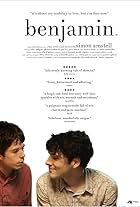In this modern version of the infamous Leopold and Loeb murder case of the 1920s, "Swoon" stresses the gay angle, relative to "Compulsion" (1959), a film of the same story, but burdened by the watchful eye of the censors associated with the moralistic Hays Code. Actual court records do in fact indicate that the relationship or bond between these two guys was primarily sexual.
Nathan Leopold and Richard Loeb apparently had a masochistic pact. And "Swoon" asks the question: which guy was in control? The answer seems to be that they alternated control. Also, compared to "Compulsion", more attention is given to the actual murder of the teenage boy.
This film is quite stylized. Archival images and lyrical cutaways unrelated to the story are used because they are thematically relevant. Further, some scenes are intended as dreams. And non-period piece elements add textural perspective.
The real Nathan Leopold is shown in historical footage, first as a young man at about the time of the actual killing. He is shown in a sequence with a group of fellow ornithologists. And near the end of the film, he is shown as an older man, having been released from prison.
"Swoon" was shot in B&W. Images are a tad grainy, maybe deliberately so, as part of the film's visual style. Casting and acting are fine. I did not care for the background music. It's too whimsical and kooky sounding, given the subject matter. But the music does contribute to the film's overall flighty, giddy tone, reflected in the lack of emotional involvement of the characters. Further, the killing of the young boy is perfunctory and nonchalant.
The film's peculiar tone and mood I found annoying. Yet, it's probably consistent with the mindset of these two peculiar criminals, two guys, both cerebral and intelligent, completely lacking both in conscience and in a sense of moral principles.
Overall, compared to "Compulsion", "Swoon" is more direct, and perhaps a tad more thematically compelling.























